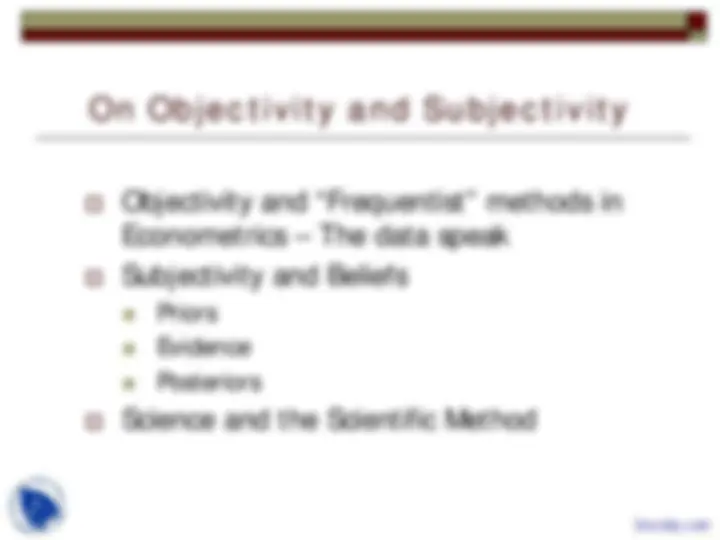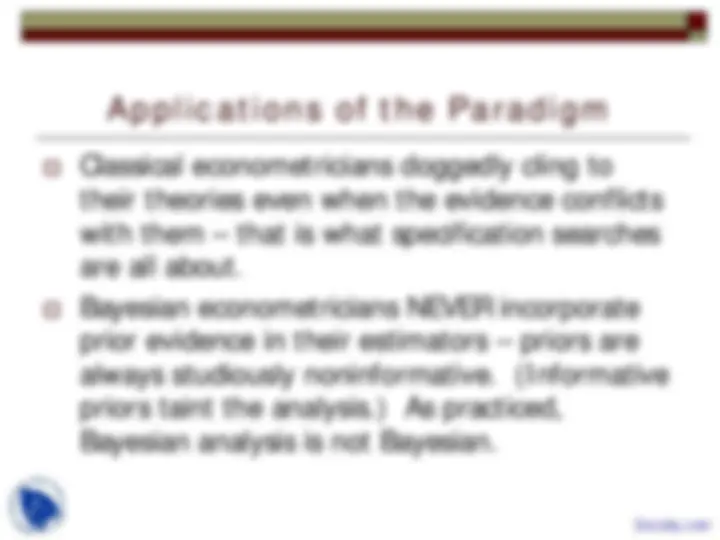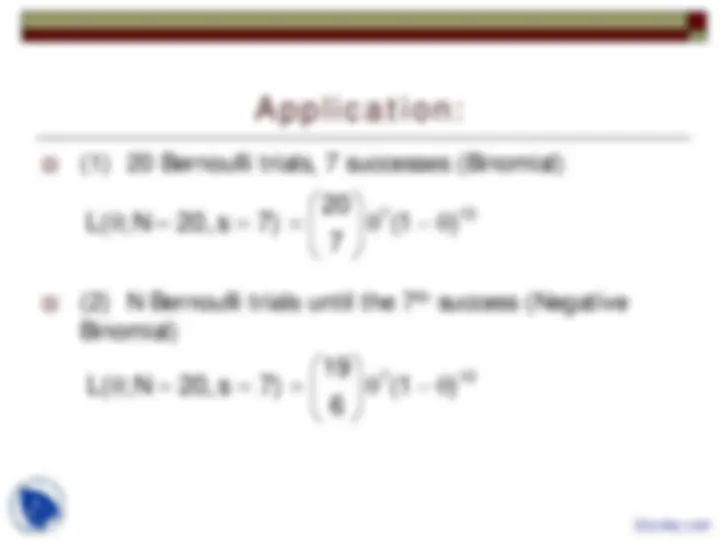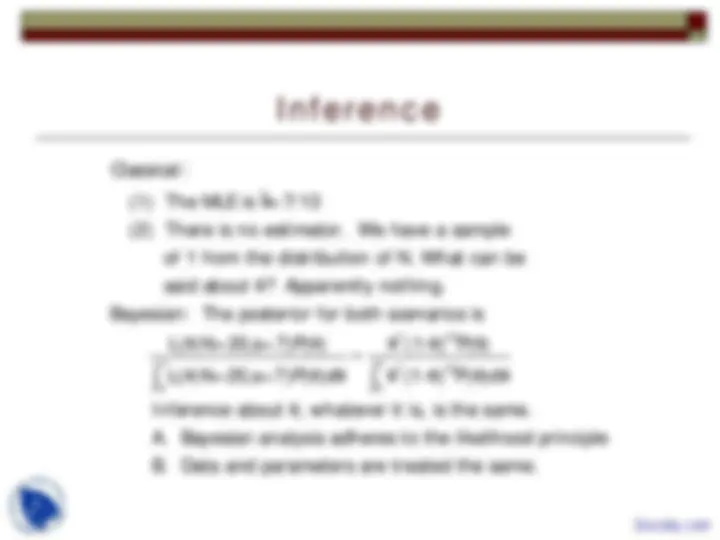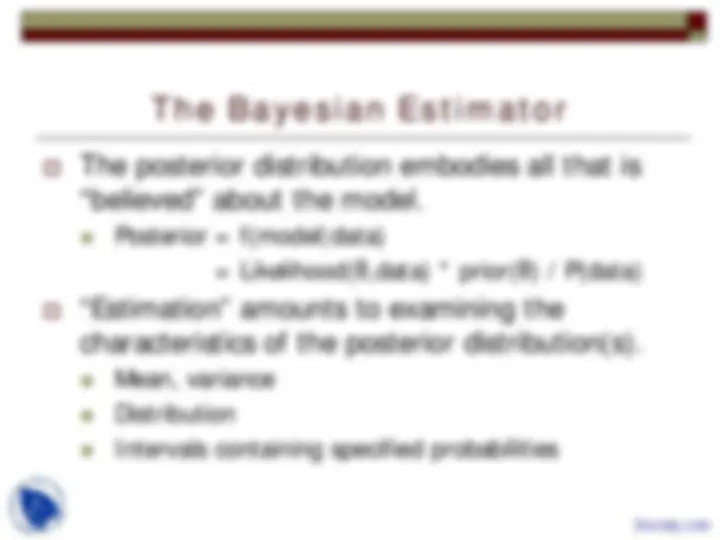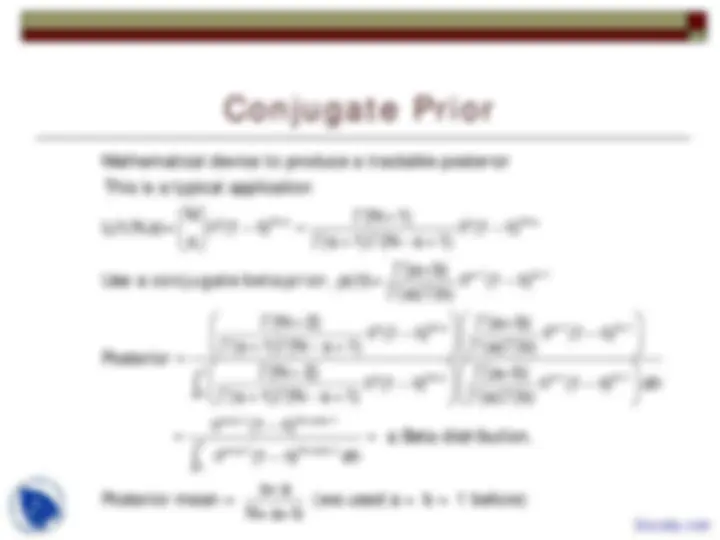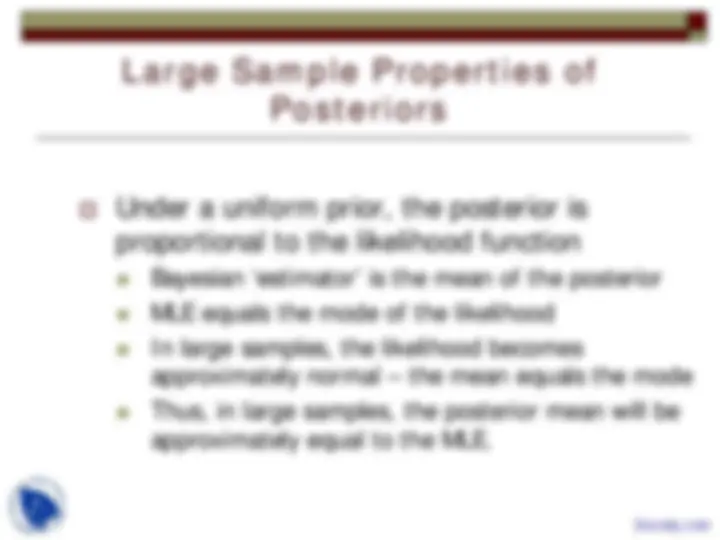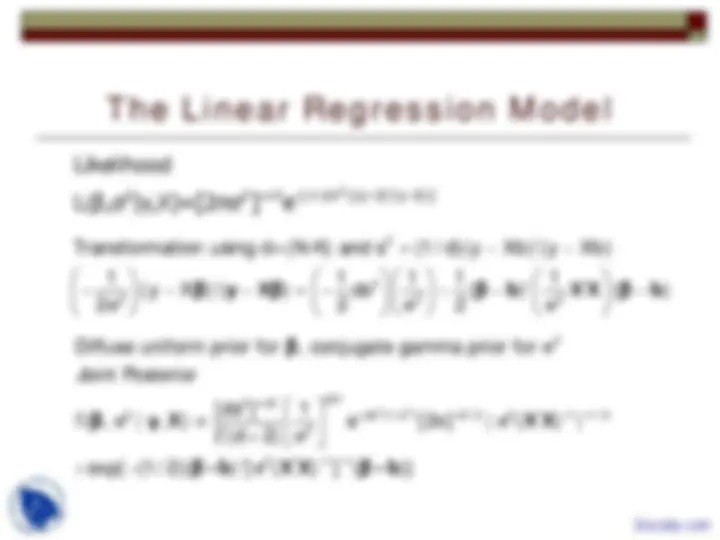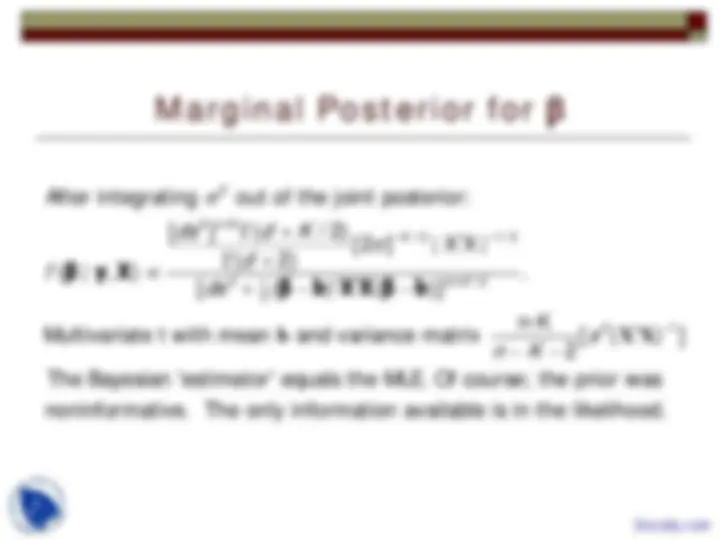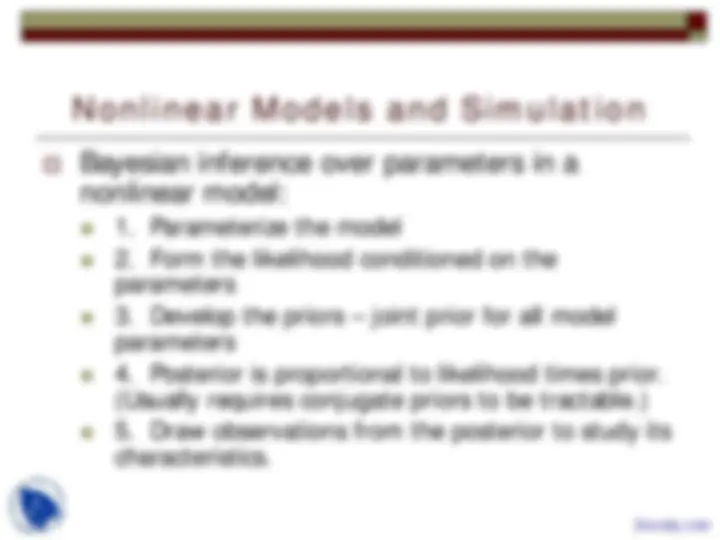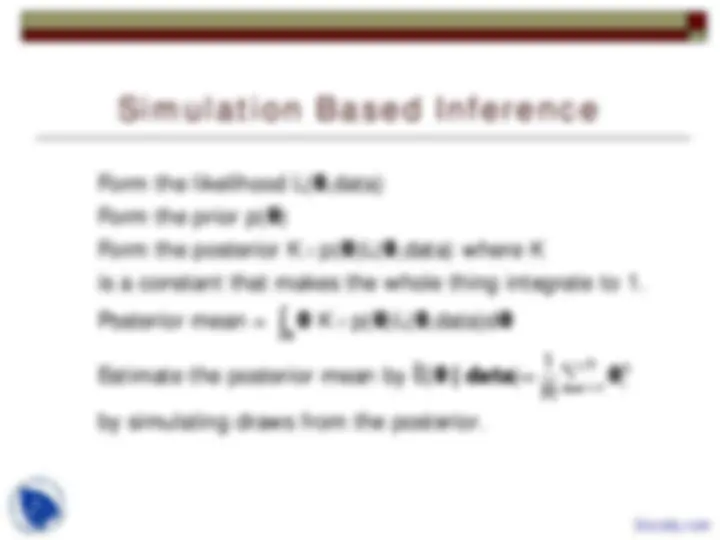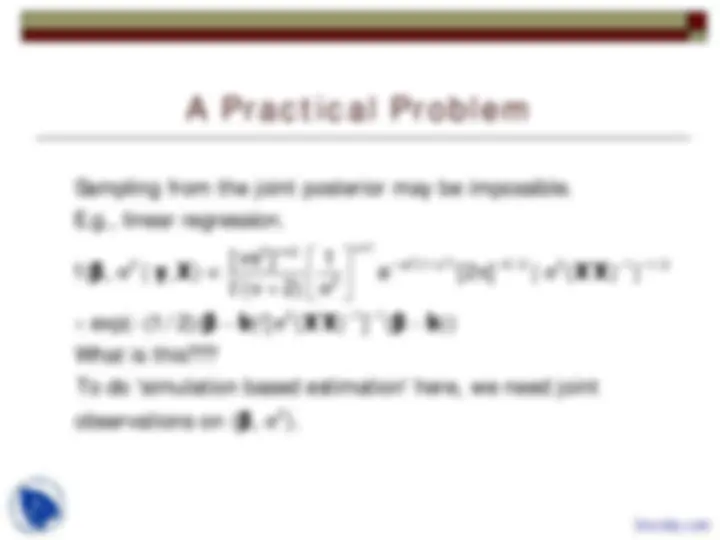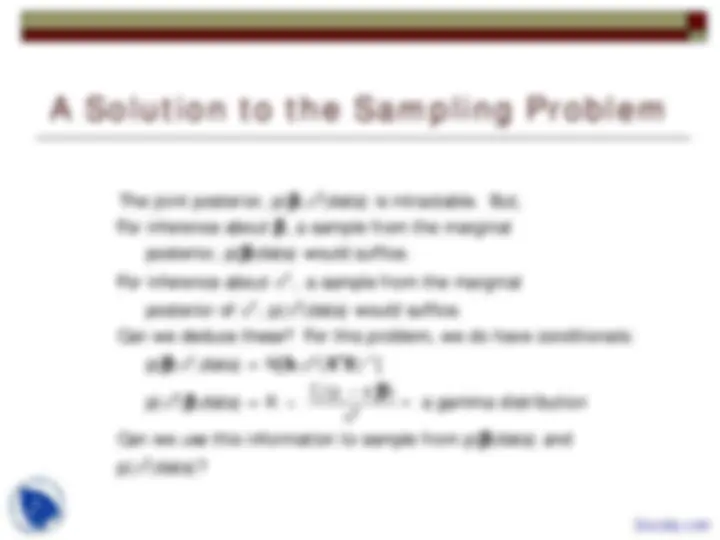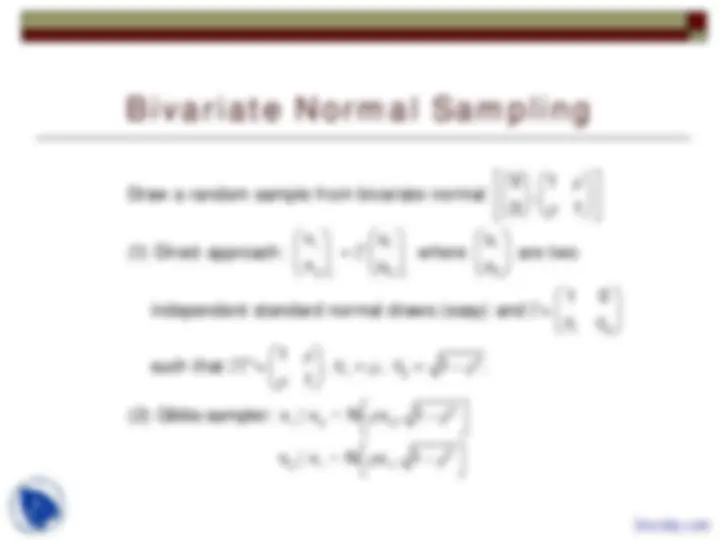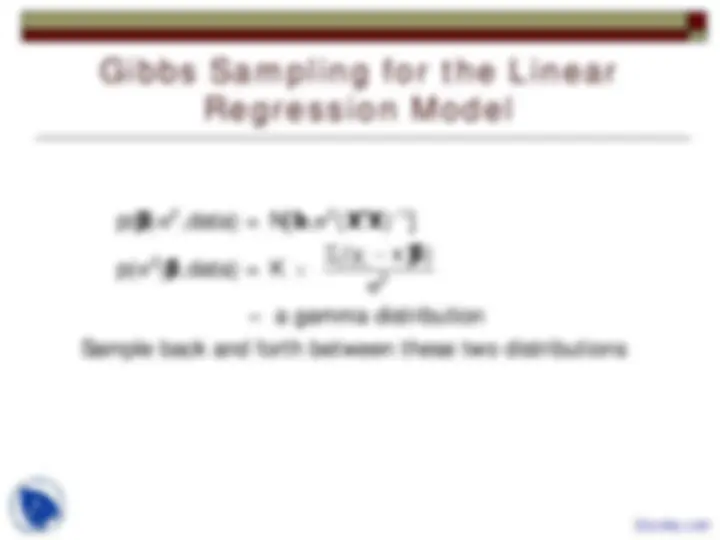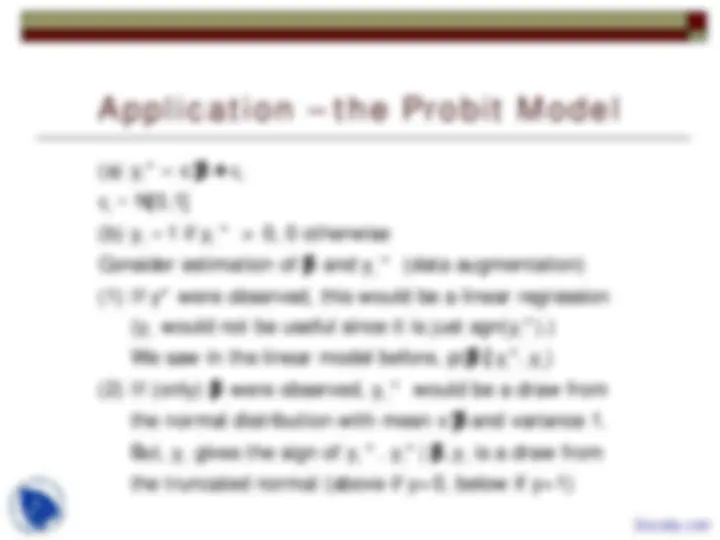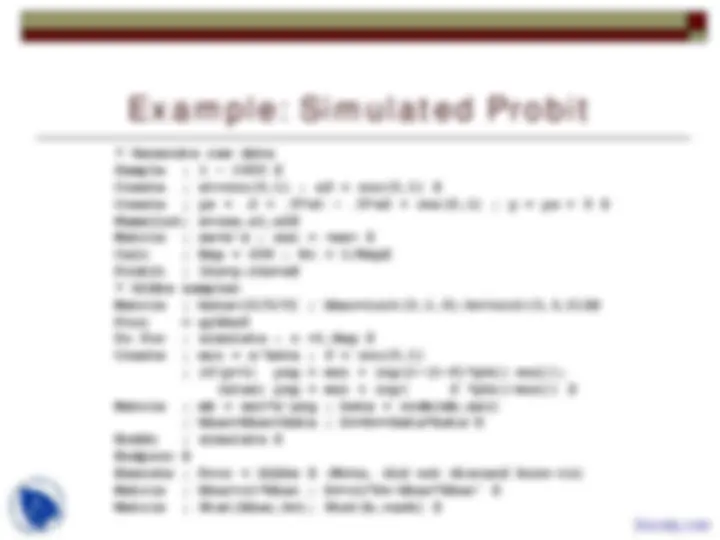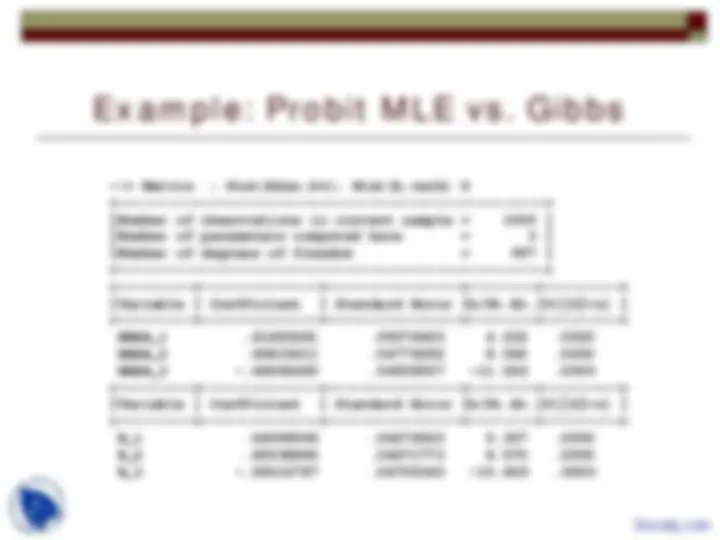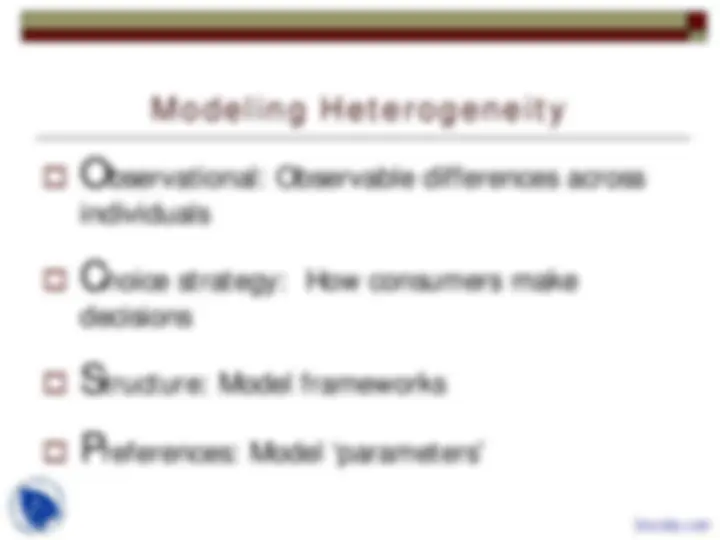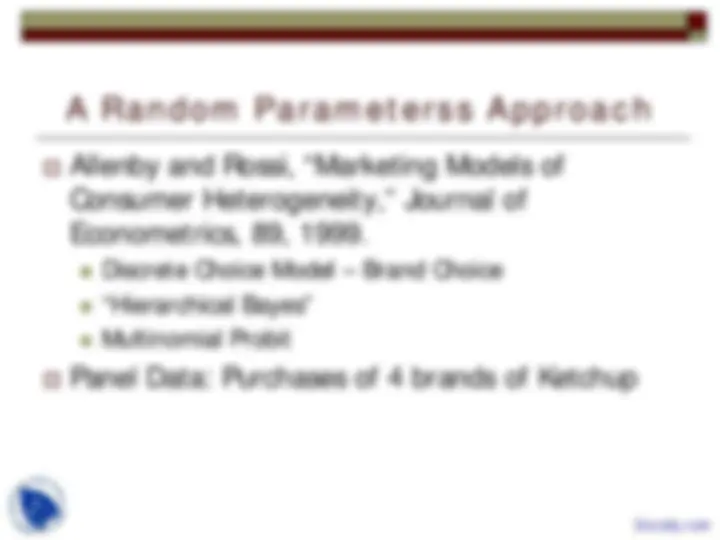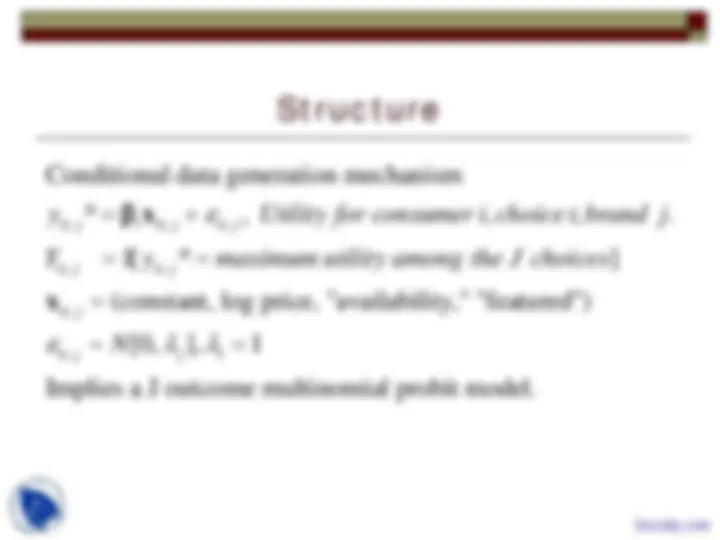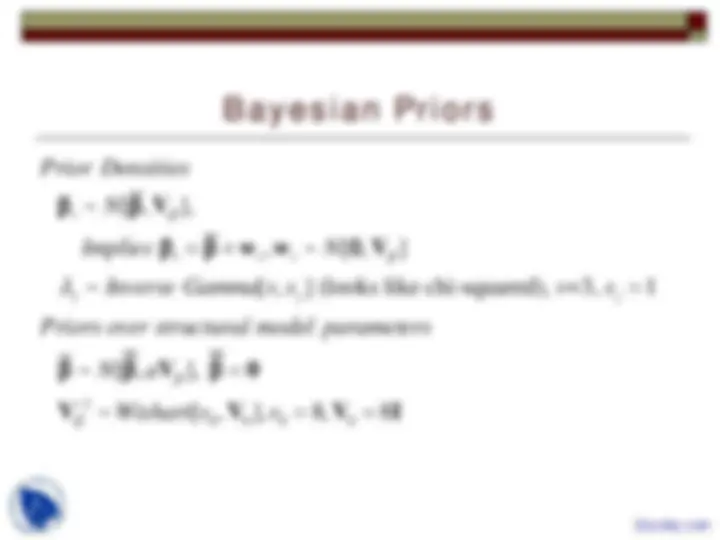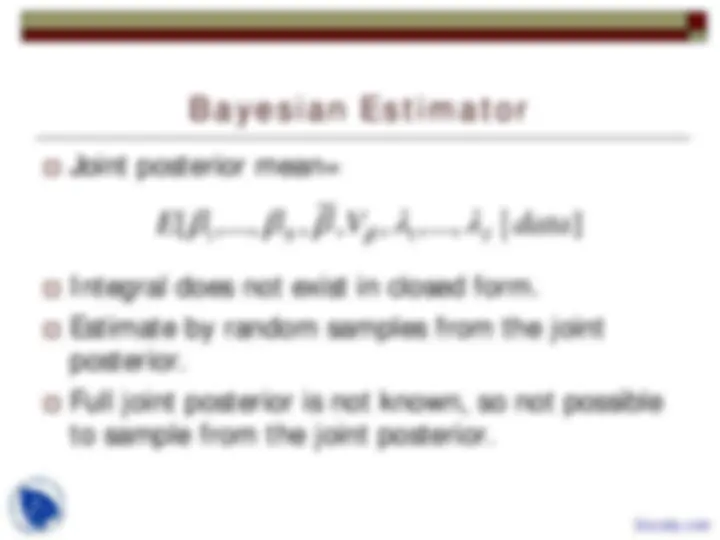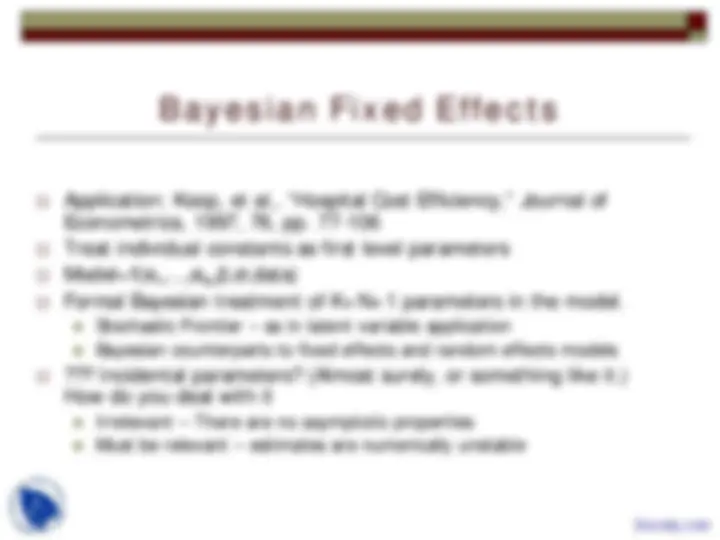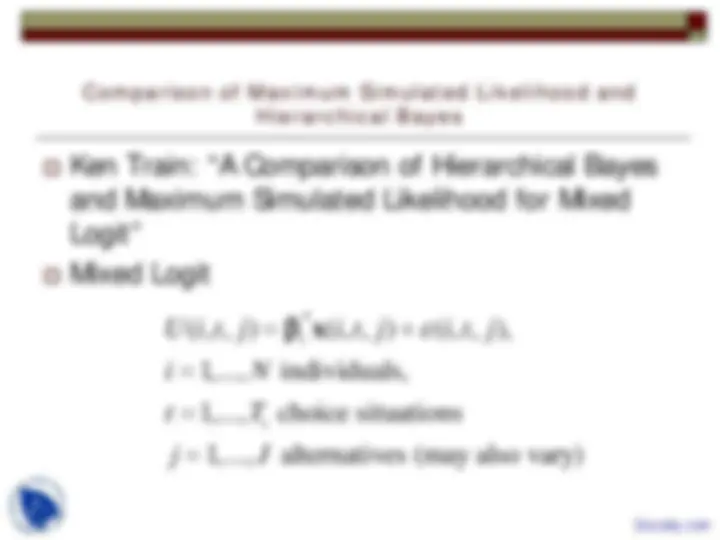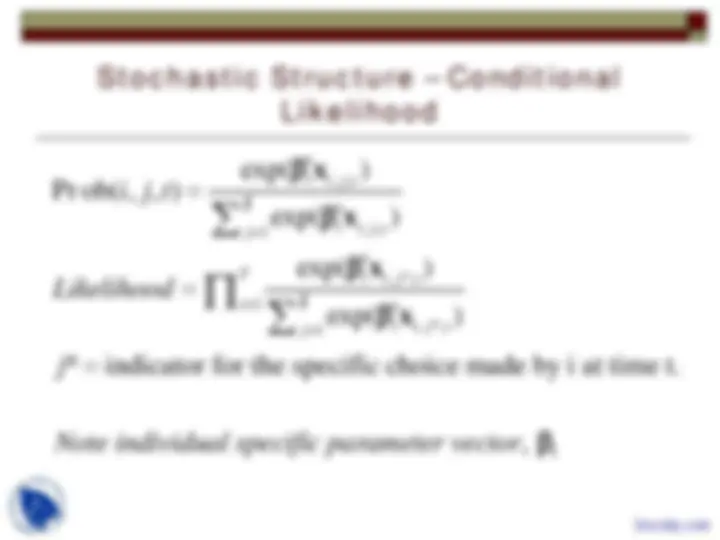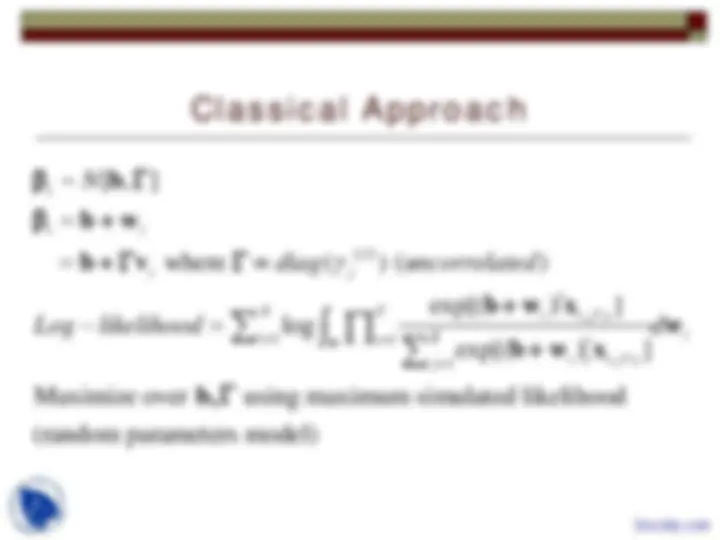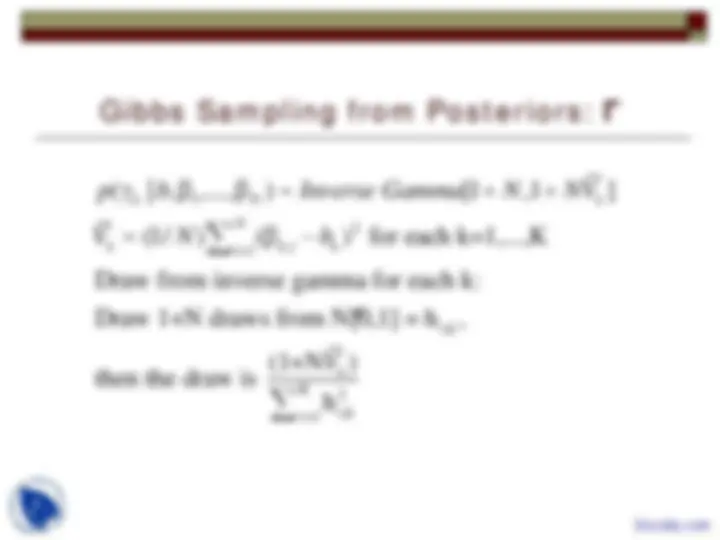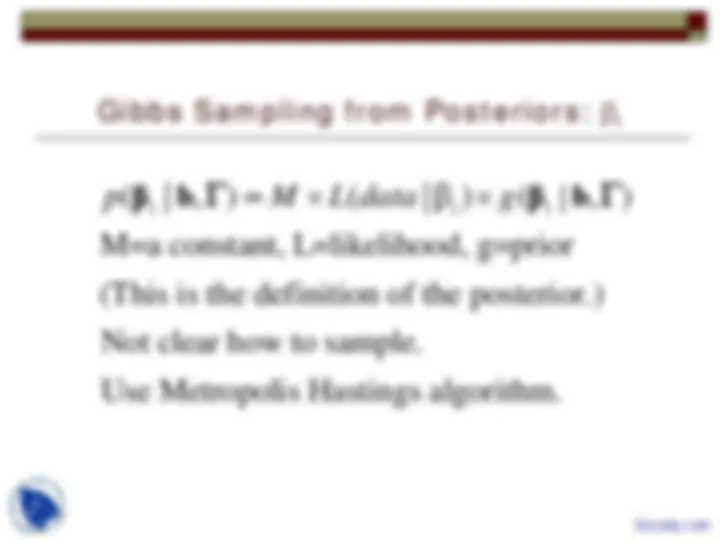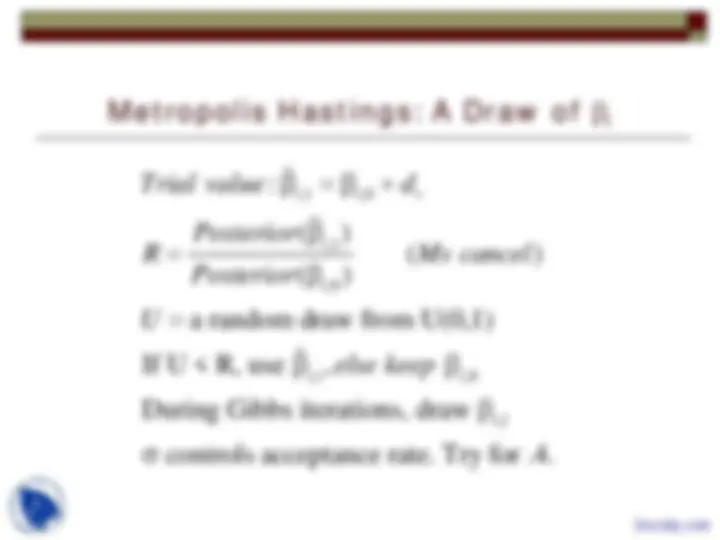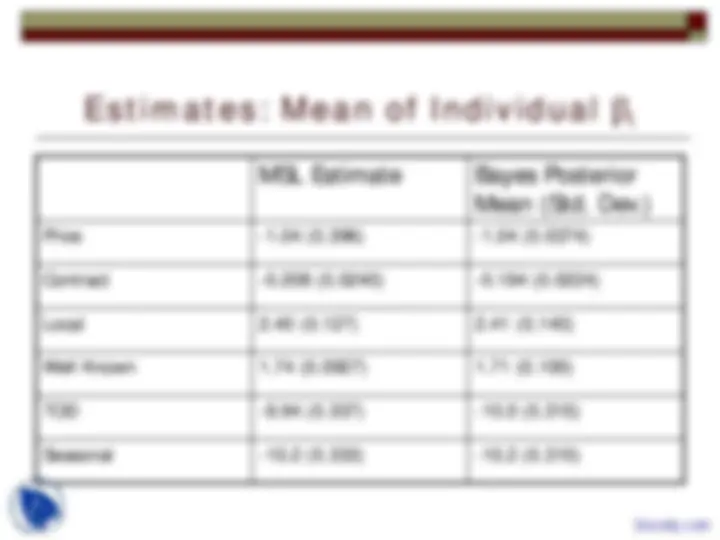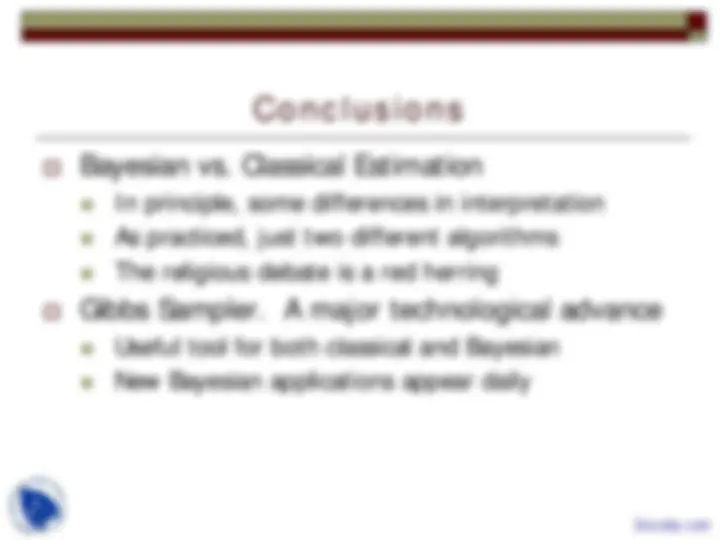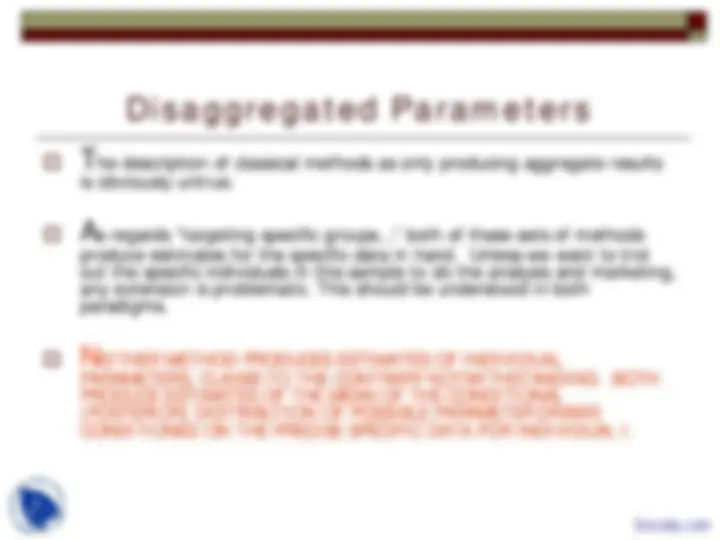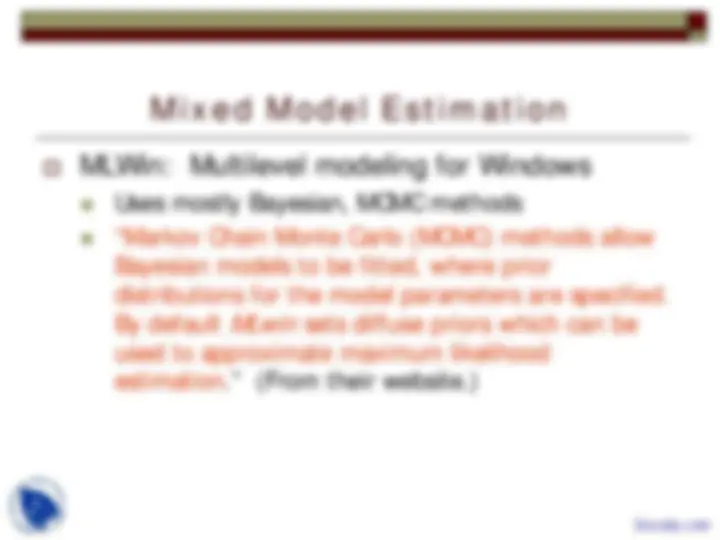Download Bayesian Econometric Models - Econometric Analysis of Panel Data - Lecture Slides and more Slides Econometrics and Mathematical Economics in PDF only on Docsity!
Econometric Analysis of Panel Data
21. Bayesian Econometric Models
for Panel Data
A Philosophical Underpinning
A method of using new information to update
existing beliefs about probabilities of events
Bayes Theorem for events. (Conceived for
updating beliefs about games of chance)
Pr(A,B)
Pr(A | B)
Pr(B)
Pr(B | A)Pr(A)
Pr(B)
Paradigms
Classical
Formulate the theory
Gather evidence
Evidence consistent with theory? Theory stands and waits for
more evidence to be gathered
Evidence conflicts with theory? Theory falls
Bayesian
Formulate the theory
Assemble existing evidence on the theory
Form beliefs based on existing evidence
Gather evidence
Combine beliefs with new evidence
Revise beliefs regarding the theory
Applications of the Paradigm
Classical econometricians doggedly cling to
their theories even when the evidence conflicts
with them – that is what specification searches
are all about.
Bayesian econometricians NEVER incorporate
prior evidence in their estimators – priors are
always studiously noninformative. (Informative
priors taint the analysis.) As practiced,
Bayesian analysis is not Bayesian.
The Likelihood Principle
The likelihood embodies ALL the
current information about the
parameters and the data
Proportional likelihoods should lead to
the same inferences
Application:
(1) 20 Bernoulli trials, 7 successes (Binomial)
(2) N Bernoulli trials until the 7
th
success (Negative
Binomial)
7 13
L( ;N 20, s 7) (1 )
7 13
L( ;N 20, s 7) (1 )
The Bayesian Estimator
The posterior distribution embodies all that is
“believed” about the model.
Posterior = f(model|data)
= Likelihood(θ,data) * prior(θ) / P(data)
“Estimation” amounts to examining the
characteristics of the posterior distribution(s).
Mean, variance
Distribution
Intervals containing specified probabilities
Priors and Posteriors
The Achilles heel of Bayesian Econometrics
Noninformative and Informative priors for estimation of
parameters
Noninformative (diffuse) priors: How to incorporate the total
lack of prior belief in the Bayesian estimator. The estimator
becomes solely a function of the likelihood
Informative prior: Some prior information enters the
estimator. The estimator mixes the information in the
likelihood with the prior information.
Improper and Proper priors
P(θ) is uniform over the allowable range of θ
Cannot integrate to 1.0 if the range is infinite.
Salvation – improper, but noninformative priors will fall out of
the posterior.
Conjugate Prior
s N s s N s
a 1 b 1
Mathematical device to produce a tractable posterior
This is a typical application
N (^) (N 1) L( ;N,s)= (1 ) (1 )
s (s 1) (N s 1)
(a+b) Use a , p( )= (1 )
(a) (b)
Po
− −
− −
Γ + θ (^) θ − θ = θ − θ
Γ^ +^ Γ^ −^ +
Γ θ θ − θ Γ Γ
conjugate beta prior
s N s a 1 b 1
1 s N s a 1 b 1
0
s a 1 N s b 1
1 s a 1 N s b
0
(N 2) (a+b) (1 ) (1 ) (s 1) (N s 1) (a) (b) sterior (N 2) (a+b) (1 ) (1 ) d (s 1) (N s 1) (a) (b)
(1 )
(1 )
− − −
− − −
Γ + Γ θ^ − θ^ θ^ − θ Γ^ +^ Γ^ −^ +^ Γ^ Γ = Γ + Γ θ^ − θ^ θ^ − θ^ θ Γ^ +^ Γ^ −^ +^ Γ^ Γ
θ − θ
θ − θ
1
a Beta distribution.
d
s+a Posterior mean = (we used a = b = 1 before)
N+a+b
=
θ
THE Question
Where does the prior come from?
Reconciliation
A Theorem (Bernstein-Von Mises)
The posterior distribution converges to normal with
covariance matrix equal to 1/N times the information
matrix (same as classical MLE). (The distribution that is
converging is the posterior, not the sampling
distribution of the estimator of the posterior mean.)
The posterior mean (empirical) converges to the mode
of the likelihood function. Same as the MLE. A proper
prior disappears asymptotically.
Asymptotic sampling distribution of the posterior mean
is the same as that of the MLE.
Bayesian Estimators
First generation: Do the integration (math)
Contemporary - Simulation:
(1) Deduce the posterior
(2) Draw random samples of draws from the posterior and
compute the sample means and variances of the samples.
(Relies on the law of large numbers.)
= ∫
f(data | )p( ) E( | data) d β f(data)
β β β β β
Marginal Posterior for β
2
2 2 / 2 1 / 2
2 1 / 2 2
2 1
After integrating out of the joint posterior:
[ ] ( / 2) [2 ] | | ( 2) ( | , ). [ ( ) ( )]
n-K
Multivariate t with mean and variance matrix [ ( ) ]
2
The Bayesi
v K
d K
ds d K
d f
ds
s n K
σ
π
− −
−
Γ + ′
Γ + ∝
− −
X X
β y X β b X X β b
b X'X
an 'estimator' equals the MLE. Of course; the prior was
noninformative. The only information available is in the likelihood.
Nonlinear Models and Simulation
Bayesian inference over parameters in a
nonlinear model:
1. Parameterize the model
2. Form the likelihood conditioned on the
parameters
3. Develop the priors – joint prior for all model
parameters
4. Posterior is proportional to likelihood times prior.
(Usually requires conjugate priors to be tractable.)
5. Draw observations from the posterior to study its
characteristics.

